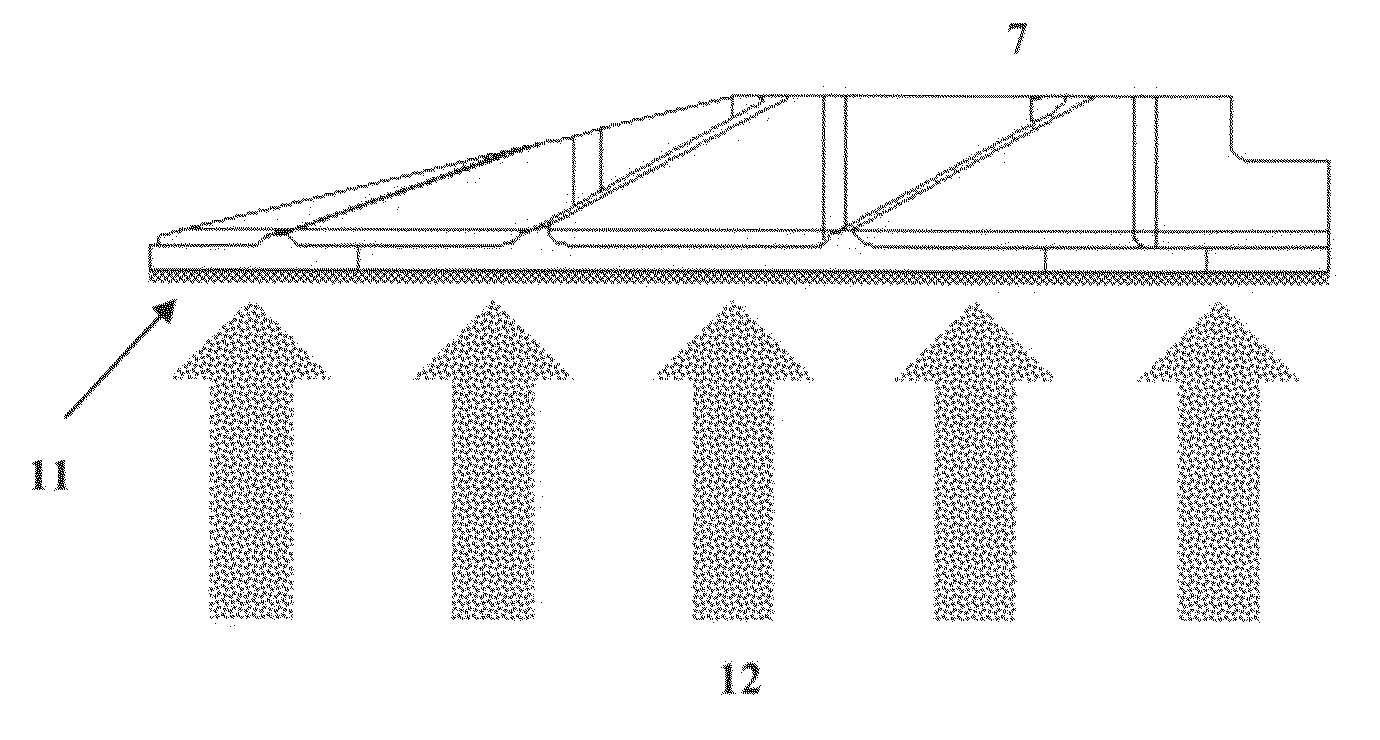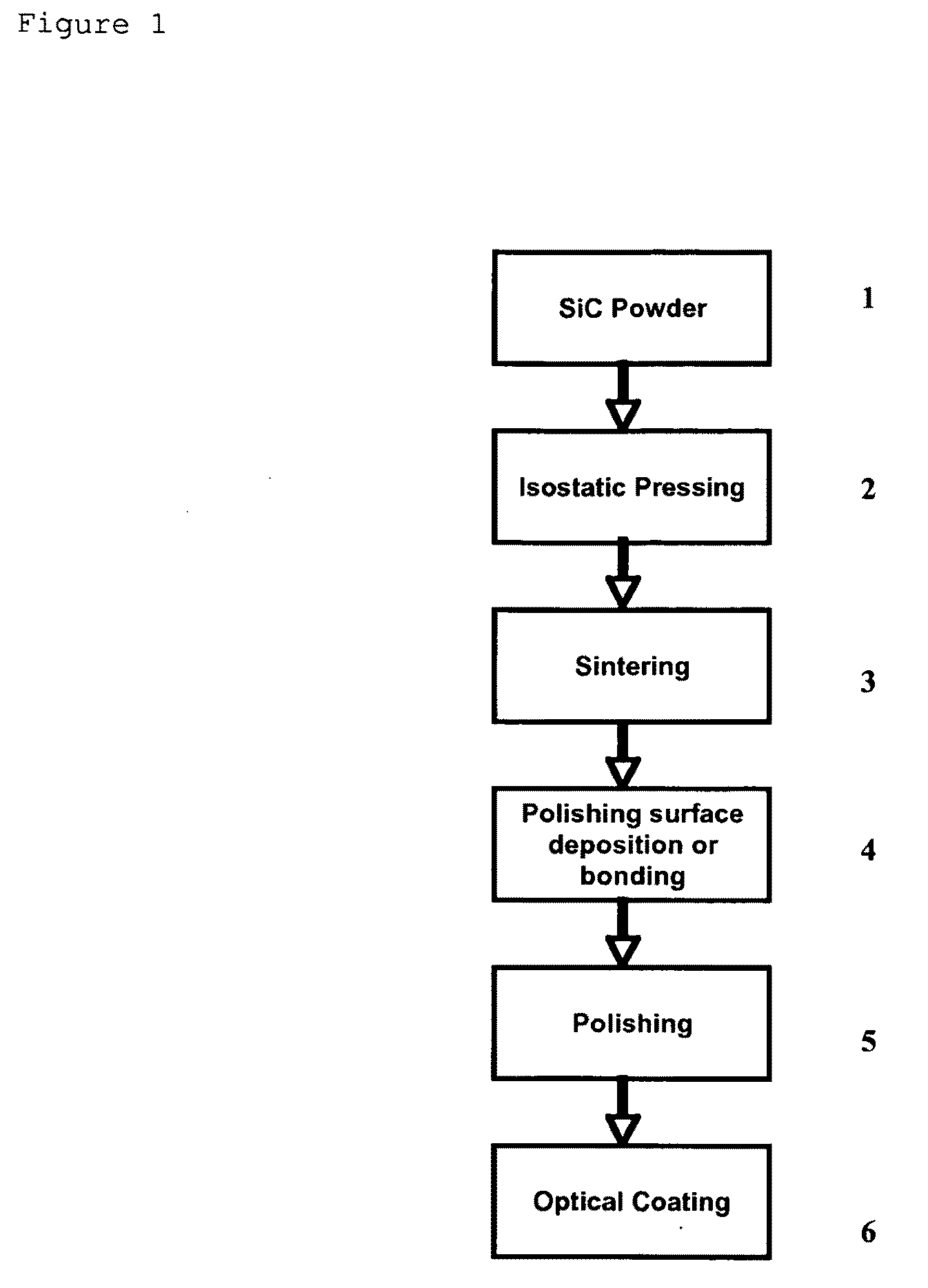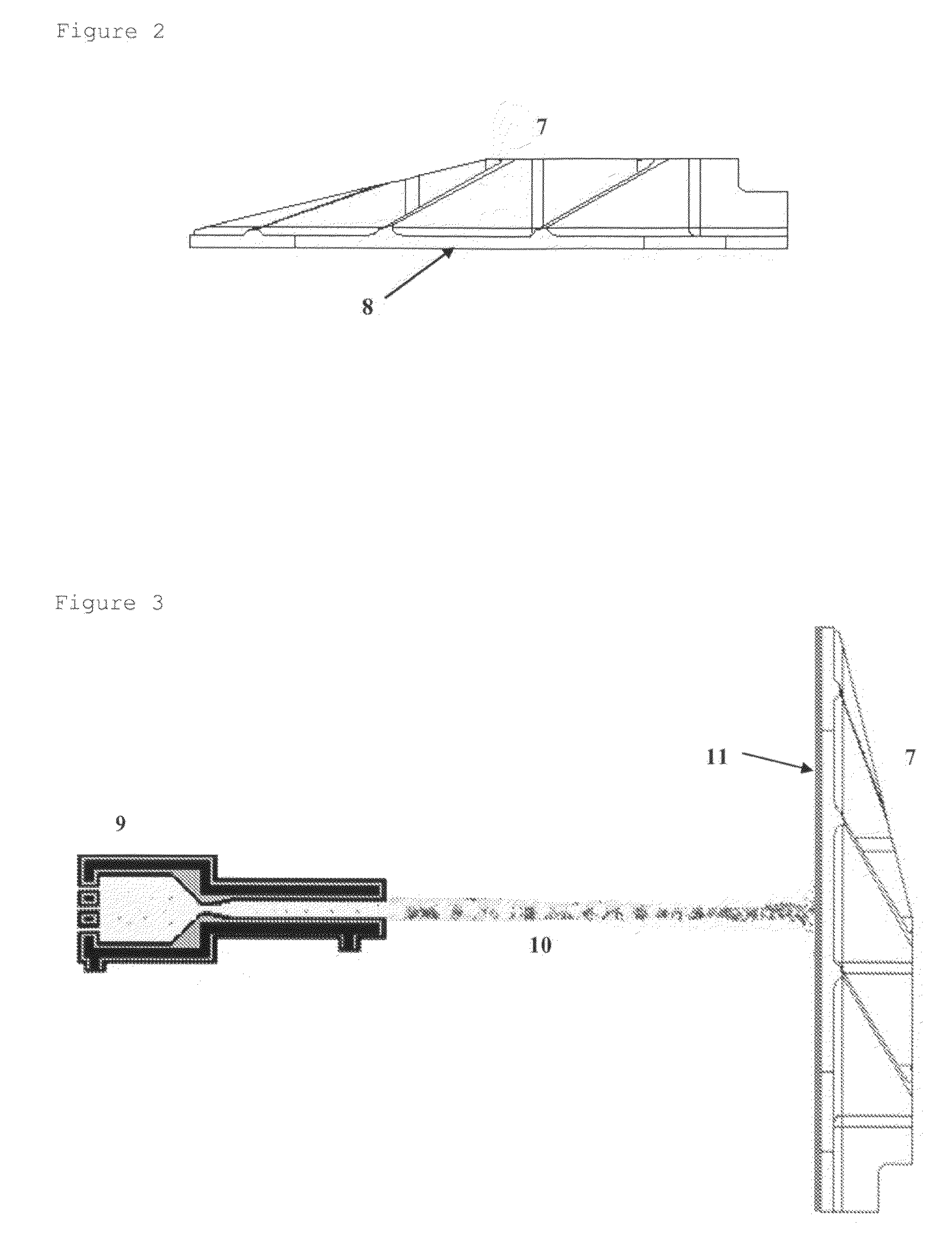Method of manufacturing and processing silicon carbide scanning and optical mirrors
a technology of optical mirrors and silicon carbide, which is applied in the direction of coatings, electrical equipment, plasma techniques, etc., can solve the problems of difficult to achieve industrially required flatness with good cost-efficiency, significant cost and time consumption, and difficult to lap and/or polish to achieve industrially required flatness, and achieves faster and cheaper. , the effect of improving the quality of the produ
- Summary
- Abstract
- Description
- Claims
- Application Information
AI Technical Summary
Benefits of technology
Problems solved by technology
Method used
Image
Examples
Embodiment Construction
[0023]As depicted in the production process flowchart in FIG. 1, Silicon Carbide powder (1) is pressed or stamped or isostatically pressed (2) using an engineered stamp or tool to form the shape and structure of a scanning or optical mirror which is then in this embodiment sintered (3) to provide a Silicon Carbide scanning or optical mirror with a surface that is the face surface of said scanning or optical mirror that may be then ground using grinding technology and commonly diamond wheel grinding or lapped or polished (not shown) using commonly available lapping and / or polishing technology.
[0024]The Silicon Carbide scanning or optical mirror now with a surface that is the face surface of said scanning or optical mirror ground using grinding technology and commonly diamond wheel grinding or lapped or polished using commonly available lapping and / or polishing technology enters a deposition or bonding process (4) and in this embodiment high velocity Oxygen fuel thermal spray process ...
PUM
| Property | Measurement | Unit |
|---|---|---|
| Ra | aaaaa | aaaaa |
| roughness | aaaaa | aaaaa |
| flatness | aaaaa | aaaaa |
Abstract
Description
Claims
Application Information
 Login to View More
Login to View More - R&D
- Intellectual Property
- Life Sciences
- Materials
- Tech Scout
- Unparalleled Data Quality
- Higher Quality Content
- 60% Fewer Hallucinations
Browse by: Latest US Patents, China's latest patents, Technical Efficacy Thesaurus, Application Domain, Technology Topic, Popular Technical Reports.
© 2025 PatSnap. All rights reserved.Legal|Privacy policy|Modern Slavery Act Transparency Statement|Sitemap|About US| Contact US: help@patsnap.com



